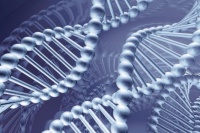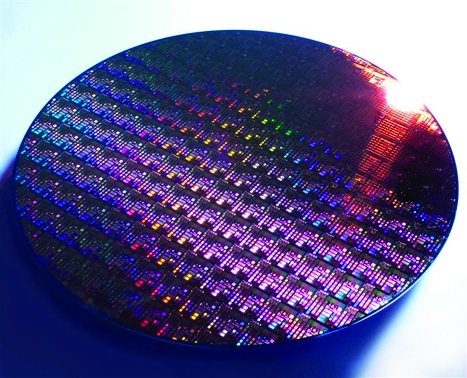
Since the draft human genome was decoded a decade ago, the world has been waiting in eager anticipation for scientists to fully unlock the secrets of our genes. Indeed, barely a month goes by without headlines reporting a breakthrough in DNA sequencing that could spell the end for a fatal disease. But success hasn’t been easy and, so far, the direct effect on our lives has been limited.
Ewan Birney, a Sanger Center geneticist, compared the sequencing of the first human genome to ’being given the best book in the world, but it’s in Russian and it’s incredibly boring to read’. What many people didn’t realise back in 2000 was that the Human Genome Project was only the beginning of many years of research. The results would be difficult to understand and it could take many more years to compile meaningful data that would make a real impact.
While scientists were pressing ahead with decoding the function and make-up of genes, engineers were working to develop technologies that would help gather the results. Their vision was that everyone would have their full DNA sequenced so that diseases could one day be predicted and prevented. The first wave of companies were soon able to use optical detection processes for full genome sequencing, but they lacked the ability and tools to present that data to people other than scientists.
“It’s like getting the best book in the world, but it’s in Russian and very boring to read”
EWAN BIRNEY , SANGER CENTER
In recent times this has changed. The introduction of electronic methods for the semiconductor-based detection of DNA has meant that the technology could provide low-cost and real-time data interpretation for individuals. Prof Chris Toumazou, director of the Institute of Biomedical Engineering at Imperial College London, predicts that it will be a couple of years before it is possible to sequence the DNA of every newborn baby. ’Cost has always been a barrier to testing. With these semiconductor technologies, we could soon sequence a full genome on a chip within a matter of minutes.’
Guildford-based life sciences firm Ion Torrent pioneered the technique using the world’s first sequencing machine based on semiconductors. Unlike earlier optical detection technologies that relied on light to translate chemical data into digital form, Ion Torrent’s system used a biochemical process to make a direct connection between chemical and digital information. Imperial College spin-out DNA Electronics owns the patent behind the behaviour of the machine’s semiconductor and has recently signed an agreement with 454 Life Sciences to further develop its technology.

’When you insert a base pair of DNA onto the semiconductor layer, through a particular coupling it acts as a converter from chemical to electrical behaviour,’ explained Toumazou, who is chairman and chief executive of DNA Electronics. ’Effectively you’ve got something that switches on a semiconductor with an input that is chemical rather than electrical. If there is a coupling, a proton is released in the chemistry, causing a change in the pH. That change, which is quite large, is enough to activate the electrical behaviour of the transistor.
The key here is that we’re using an electrical signal as the marker, which is exactly the same marker needed by a digital computer when doing its logic.’
Optical-detection technologies use fluorescent tagging to colour different bases and the only way to identify a sequence in a large array is to use photography. This requires bulky machines that are expensive and take a long time to provide results. Using an electrical signal as a marker for DNA matching removes this step, allowing cheaper, faster and scalable DNA testing.
Semiconductor DNA sequencing, according to Toumazou, could become small enough to fit on the side of a laptop and would be cheap enough to be disposable. ’I believe semiconductors will be the main form of DNA testing. Here is a technology that has already had billions of dollars of investment - it’s advanced and ready to use,’ he said.
With low-cost DNA-testing technologies developing at a rapid pace, a number of companies have already started selling their sequencing kits on the internet, through private GPs and in high-street stores. However, there is currently no regulation on the results they provide.
’The technology isn’t the problem,’ said Dr Helen Wallace, executive director of Genewatch. ’The big gap in the regulation is the interpretation of sequence. For example, we have found many companies out there saying that genes were associated with diseases in old published papers that have been found to no longer play a role.’
Toumazou recognises that this is a huge problem for the future testing capabilities. While the technical barriers are being overcome, the use of the data to provide conflicting results could be a huge step back for what is set to be an emerging industry. ’I profoundly disagree with the way some companies are doing those things,’ he said.
This technology has had billions invested in it already. It is advanced and ready to use”
PROF CHRI S TOUMAZOU, DNAELECTRONI CS
’The service offering is very important. I believe that there should always be a clinical assistant in the background. I can see systems where you actually have to go on a computer to get the results of your test, and it will be a clinical adviser that comes on screen to give you that information.’
Wallace, however, believes more needs to be done. ’We don’t think just having a clinician is enough, because a clinician can’t review the scientific literature and there are also so many gaps,’ she said.
’The market is very small at the moment but I have spoken to people that have been informed that they are at a high genetic risk of cancer when they’re not and people who’ve been told that their children are at a high risk of autism. I think that is unethical and it could also lead to people taking bad health decisions. We would like to see medical oversight of testing but we’d also like to see the claims assessed by an independent regulator.’
As scientists race to catch up with engineers in their respective field of DNA sequencing technology, there remain some important issues to be addressed. The Human Genome Project was certainly a remarkable achievement and, after years of waiting, a genomics revolution driven by semiconductors could finally be on the horizon. But it will ultimately be the analysis of the results that will determine the success of the technology. If the genetics industry can pull it off, however, real-time DNA testing may well become one of the greatest inventions in medical history.
Timeline chain reaction
The 50-year history of DNA sequencing
- 1953 The DNA double helix was discovered after James Watson and Francis Crick proposed a model of DNA structure that enabled scientists to understand how cells divide and multiply.
- 1977 Methods for understanding the base sequence of DNA were developed in two separate locations: At Harvard University by Walter Gilbert and Allan Maxam, and at Cambridge University by Fred Sanger.
- 1984 Medical Research Council scientists uncovered the full DNA sequence for the Epstein-Barr virus.
- 1990 The 15-year Human Genome Project formally began.
- 1998 Craig Venter founded Celera Genomics to sequence the human genome using the whole genome shotgun technique and automated DNA sequencing machines.
- 2000 Human Genome Project leaders and US president Bill Clinton announced the completion of a working draft DNA sequence of the human genome.
- 2001 Syngenta and Myriad Genetics announced that they had completed the sequencing of the rice genome.
- 2010 DNA Electronics entered into a partnership with 454 Life Sciences to focus on the development of DNA sequencing using semiconductor technology.




Glasgow trial explores AR cues for autonomous road safety
They've ploughed into a few vulnerable road users in the past. Making that less likely will make it spectacularly easy to stop the traffic for...